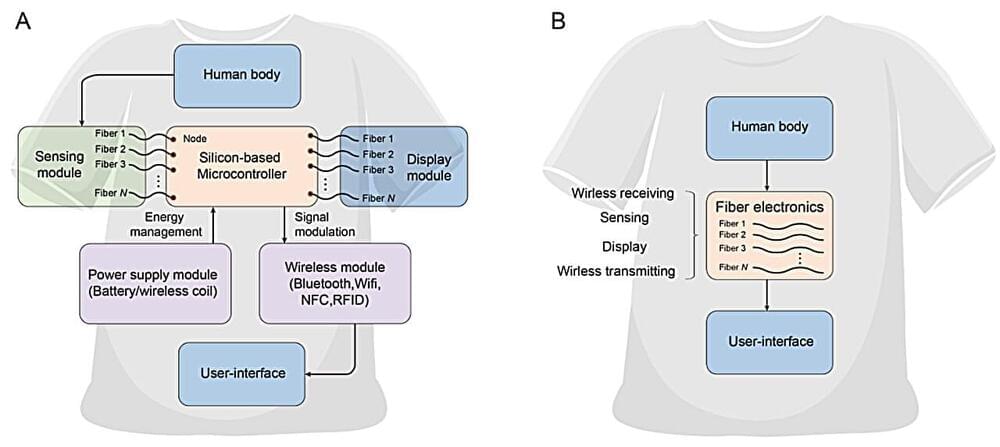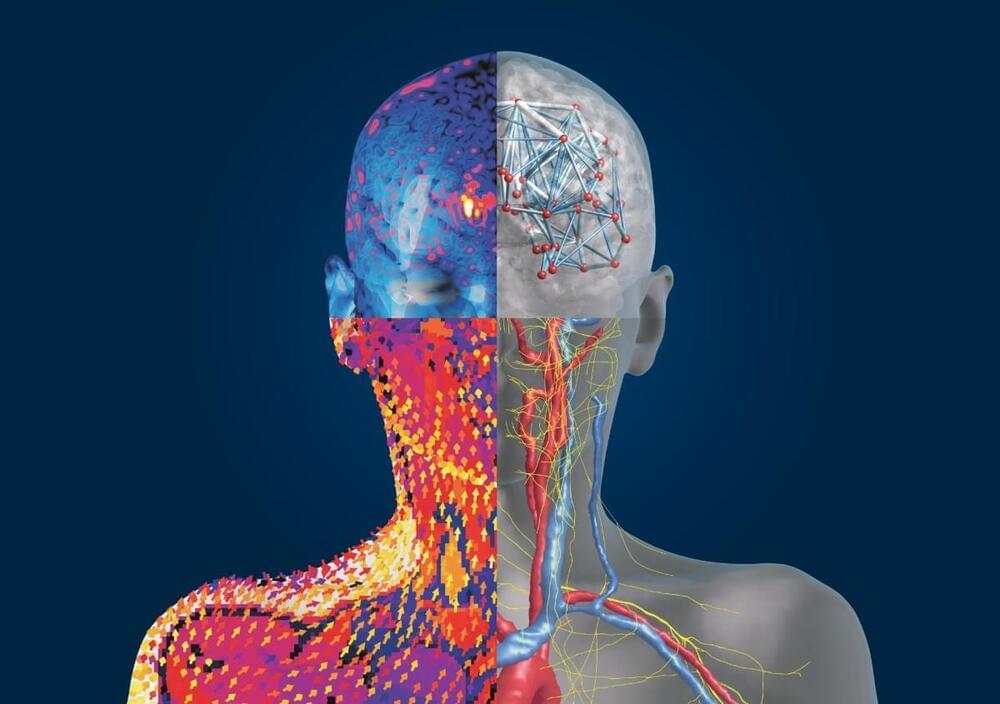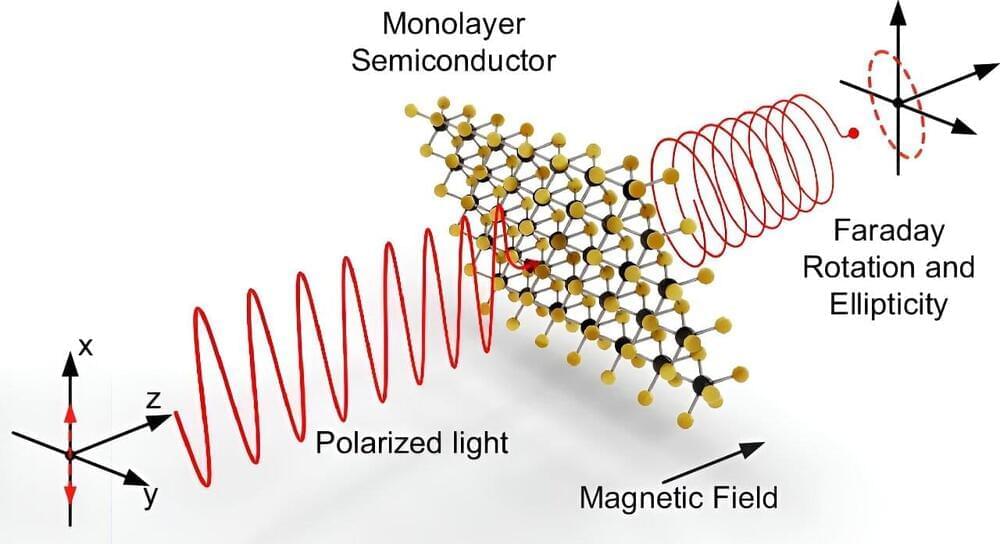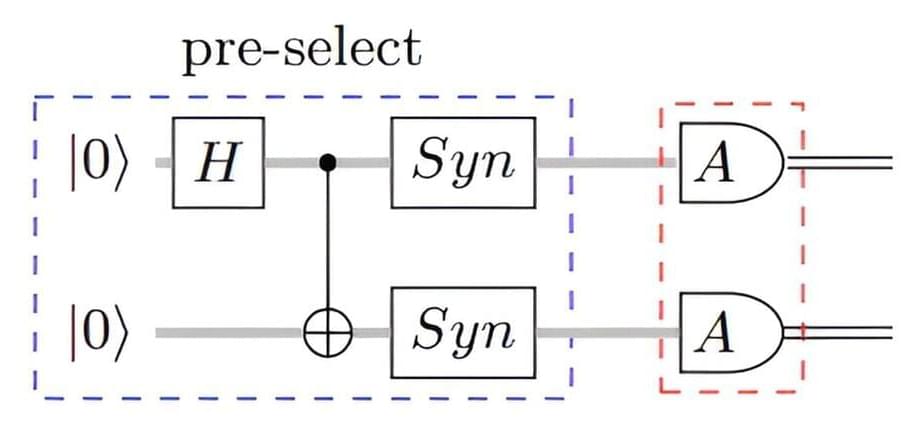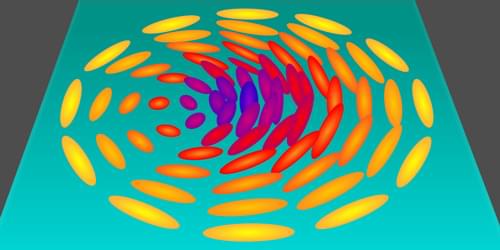Archive for the ‘computing’ category: Page 104
Apr 24, 2024
Chipless Fiber for Wireless Visual-to-Digital Transmission Senses Interactions with the Human Body
Posted by Natalie Chan in categories: biotech/medical, computing
A team of materials scientists and engineers from Donghua University, in China, and the National University of Singapore, has developed a type of fiber that does not rely on chips or batteries to convert visual signals to digital transmissions as it interacts with the human body.
The paper is published in the journal Science. Yunzhu Li and Yiyue Luo with the University of Illinois Urbana-Champaign and MIT, respectively, have published a Perspective piece in the same journal issue outlining the work done by the team on this new effort.
Over the past several years, scientists have been trying to find a way to integrate electronic devices with textiles for such applications as clothes that can display colors, patterns or even messages. Unfortunately, previous efforts involve adding stiff batteries and chips to materials, making them too uncomfortable to wear. In this new effort, the researchers have found a way to get around these problems.
Apr 24, 2024
How do you know how a medical implant will behave before it’s manufactured?
Posted by Shubham Ghosh Roy in categories: biotech/medical, computing, neuroscience
Using electromagnetic fields or implanted medical devices to stimulate the brain can have benefits, but also carries risks. Computer simulations that reflect the unique complexity of each patient can help predict and solve problems before they arise.
Apr 24, 2024
Mark Zuckerberg Just Made It Official: Meta Is Going Open-Model With Horizon OS
Posted by Kelvin Dafiaghor in categories: computing, virtual reality
The Facebook founder is letting other hardware-makers use his company’s virtual reality operating system.
Apr 24, 2024
Toshiba Europe And Single Quantum Partner to Provide Extended Long-Distance QKD Deployment Capability
Posted by Kelvin Dafiaghor in categories: computing, nanotechnology, quantum physics
PRESS RELEASE — Toshiba Europe Ltd. and Single Quantum B.V. have collaborated to test and validate long-distance deployments of Quantum Key Distribution (QKD) technology. Following extended validation testing of Toshiba’s QKD technology and Single Quantum’s superconducting nanowire single photon detectors (SNSPDs), both companies are pleased to announce a solution that substantially extends the transmission range for QKD deployment over fibre connections, up to and beyond 300km.
QKD uses the quantum properties of light to generate quantum secure keys that are immune to decryption by both high performance conventional and quantum computers. Toshiba’s QKD is deployed over fibre networks, either coexisting with conventional data transmissions on deployed ‘lit’ fibres, or on dedicated quantum fibres.
Toshiba’s unique QKD technology can deliver quantum secure keys in a single fibre optic link at distances of up to 150km using standard integrated semiconductor devices. Achieving longer distance QKD fibre transmission is challenging due to the attenuation of the quantum signals along the fibre length, (the optical loss of the fibre link). To provide extended QKD transmission, operators typically concatenate fibre links together with trusted nodes along the fibre route which house QKD systems that relay the secret keys.
Apr 24, 2024
Reimagining Memory: New Research Reveals That Superconducting Loops Mimic the Brain
Posted by Genevieve Klien in categories: computing, neuroscience
Computers work in digits — 0s and 1s to be exact. Their calculations are digital; their processes are digital; even their memories are digital. All of which requires extraordinary power resources. As we look to the next evolution of computing and developing neuromorphic or “brain-like” computing, those power requirements are unfeasible.
To advance neuromorphic computing, some researchers are looking at analog improvements. In other words, not just advancing software, but advancing hardware too. Research from the University of California San Diego and UC Riverside shows a promising new way to store and transmit information using disordered superconducting loops.
The team’s research, which appears in the Proceedings of the National Academy of Sciences, offers the ability of superconducting loops to demonstrate associative memory, which, in humans, allows the brain to remember the relationship between two unrelated items.
Apr 23, 2024
Study shows ultra-thin two-dimensional materials can rotate the polarization of visible light
Posted by Paul Battista in categories: computing, materials
It has been known for centuries that light exhibits wave-like behavior in certain situations. Some materials are able to rotate the polarization, i.e. the direction of oscillation, of the light wave when the light passes through the material. This property is utilized in a central component of optical communication networks known as an “optical isolator” or “optical diode.” This component allows light to propagate in one direction but blocks all light in the other direction.
Apr 23, 2024
Quantinuum Quantum Computer using Microsoft’s ‘Logical Quantum Bits’ runs 14,000 Experiments with No Errors
Posted by Natalie Chan in categories: computing, quantum physics
A team of computer engineers from quantum computer maker Quantinuum, working with computer scientists from Microsoft, has found a way to greatly reduce errors when running experiments on a quantum computer. The combined group has published a paper describing their work and results on the arXiv preprint server.
Computer scientists have been working for several years to build a truly useful quantum computer that could achieve quantum supremacy. Research has come a long way, most of which has involved adding more qubits.
But such research has been held up by one main problem—quantum computers make a lot of errors. To overcome this problem, researchers have been looking for ways to reduce the number of errors or to correct those that are made before results are produced.
Apr 23, 2024
Revolutionizing Brain Health: Rice University Unveils Tiny, Implantable Brain Stimulator
Posted by Saúl Morales Rodriguéz in categories: biotech/medical, computing, health, neuroscience
Rice University engineers have developed the smallest implantable brain stimulator demonstrated in a human patient. Thanks to pioneering magnetoelectric power transfer technology, the pea-sized device developed in the Rice lab of Jacob Robinson in collaboration with Motif Neurotech and clinicians Dr. Sameer Sheth and Dr. Sunil Sheth can be powered wirelessly via an external transmitter and used to stimulate the brain through the dura ⎯ the protective membrane attached to the bottom of the skull.
The device, known as the Digitally programmable Over-brain Therapeutic (DOT), could revolutionize treatment for drug-resistant depression and other psychiatric or neurological disorders by providing a therapeutic alternative that offers greater patient autonomy and accessibility than current neurostimulation-based therapies and is less invasive than other brain-computer interfaces (BCIs).
Apr 23, 2024
Witnessing the Birth of Skyrmions
Posted by Saúl Morales Rodriguéz in categories: computing, particle physics, quantum physics
Using thin layers of chiral nematic liquid crystals, researchers have observed the formation dynamics of skyrmions.
A skyrmion is a topologically stable, vortex-like field configuration that cannot be smoothly morphed to a uniform state [1]. First proposed by physicist Tony Skyrme in 1961 as a model of the nucleon [2], the concept has since been studied in condensed-matter physics and adjacent fields [3]. In particular, skyrmions have cropped up in studies of magnetism [4], Bose-Einstein condensates [5], quantum Hall systems [6], liquid crystals [7], and in other contexts (see, for example, Viewpoint: Water Can Host Topological Waves and Synopsis: Skyrmions Made from Sound Waves). Skyrmions exhibit fascinating properties such as small size, stability, and controllability, which give them great potential for applications in spintronics, data storage, and quantum computing.

